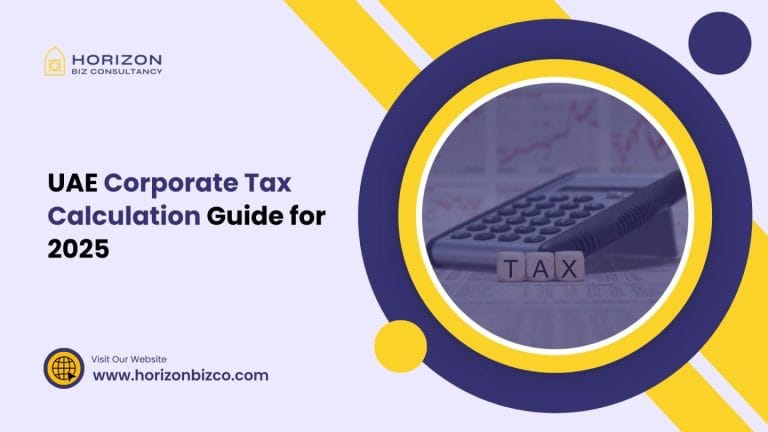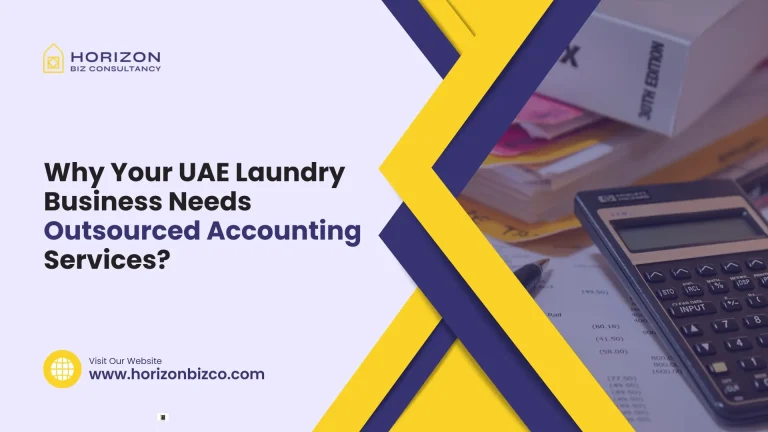The UAE corporate tax system, implemented from June 1, 2023, has fundamentally changed the business landscape across all emirates. Whether you’re running a small-to-medium enterprise (SME) or operating within a UAE free zone, understanding how to calculate your corporate tax liability is crucial for compliance and financial planning.
This comprehensive guide walks you through the exact calculation process, providing real-world examples and addressing the most common questions business owners face.
Overview of UAE Corporate Tax Rates
The UAE applies a tiered corporate tax structure with 0% tax on profits up to AED 375,000 and 9% on profits above this threshold. Additionally, large multinational enterprises (MNEs) with global revenues exceeding €750 million face an additional 15% Domestic Minimum Top-up Tax (DMTT) starting January 1, 2025.
Key Tax Rates:
- 0% on taxable income up to AED 375,000
- 9% on taxable income exceeding AED 375,000
- 15% additional DMTT for qualifying MNEs (effective 2025)
How to Calculate Corporate Tax for SMEs in UAE: Step-by-Step Guide
Step 1: Determine Your Taxable Income
Start by calculating your net taxable income using this formula:
Taxable Income = Total Revenue – Allowable Expenses – Exemptions
Step 2: Apply the Tax-Free Threshold
The first AED 375,000 of taxable income is exempt from corporate tax for all businesses.
Step 3: Calculate Tax on Remaining Income
Apply the 9% rate only to income exceeding AED 375,000.
Step 4: Account for Tax Credits and Reliefs
Deduct any applicable tax credits or reliefs from your calculated tax liability.
Corporate Tax Examples for UAE Businesses
Example 1: SME Corporate Tax Calculation
ABC Trading LLC – Annual Financial Summary:
- Total Revenue: AED 1,000,000
- Allowable Business Expenses: AED 500,000
- Taxable Income: AED 500,000
Tax Calculation:
- Tax-free portion: AED 375,000 × 0% = AED 0
- Taxable portion: (AED 500,000 – AED 375,000) = AED 125,000
- Corporate Tax Liability: AED 125,000 × 9% = AED 11,250
Example 2: High-Revenue SME Calculation
XYZ Services LLC – Annual Financial Summary:
- Total Revenue: AED 2,500,000
- Allowable Business Expenses: AED 1,800,000
- Taxable Income: AED 700,000
Tax Calculation:
- Tax-free portion: AED 375,000 × 0% = AED 0
- Taxable portion: (AED 700,000 – AED 375,000) = AED 325,000
- Corporate Tax Liability: AED 325,000 × 9% = AED 29,250
Corporate Tax Calculation for Free Zone Companies
Free zone companies operate under special rules as Qualifying Free Zone Persons (QFZP), benefiting from preferential tax treatment on qualifying income.
Understanding Qualifying vs. Non-Qualifying Income
Qualifying free zone persons are subject to 0% corporate tax rate on qualifying income and 9% on other taxable income. Income generated from transactions with other free zone persons is considered qualifying income and taxed at 0%.
De Minimis Threshold Rule
Free zone entities with non-qualifying revenues less than AED 5 million or 5% of total revenue (whichever is higher) can maintain their preferential status. However, if non-qualifying revenue exceeds the de-minimis threshold, the QFZP status becomes tainted for the current year and the next 4 years.
Example 3: Free Zone Company Tax Calculation
DEF Free Zone Company – Annual Financial Summary:
- Total Revenue: AED 800,000
- Qualifying Income: AED 600,000 (transactions with other FZ companies)
- Non-Qualifying Income: AED 200,000 (mainland transactions)
- Total Expenses: AED 300,000
Tax Calculation:
- Net Qualifying Income: AED 600,000 – (AED 300,000 × 75%) = AED 375,000
- Tax on Qualifying Income: AED 375,000 × 0% = AED 0
- Net Non-Qualifying Income: AED 200,000 – (AED 300,000 × 25%) = AED 125,000
- Since non-qualifying income (AED 125,000) is below the AED 375,000 threshold:
- Total Corporate Tax Liability: AED 0
Example 4: Free Zone Company Exceeding Threshold
GHI Free Zone Trading – Annual Financial Summary:
- Total Revenue: AED 1,500,000
- Qualifying Income: AED 900,000
- Non-Qualifying Income: AED 600,000
- Total Expenses: AED 500,000
Tax Calculation:
- Net Qualifying Income: AED 900,000 – (AED 500,000 × 60%) = AED 600,000
- Tax on Qualifying Income: AED 600,000 × 0% = AED 0
- Net Non-Qualifying Income: AED 600,000 – (AED 500,000 × 40%) = AED 400,000
- Tax on Non-Qualifying Income: (AED 400,000 – AED 375,000) × 9% = AED 2,250
- Total Corporate Tax Liability: AED 2,250
Conclusion
Understanding UAE corporate tax calculation is essential for business success in the current regulatory environment. Whether you’re operating as an SME or a free zone entity, proper calculation and compliance ensure you meet your obligations while optimizing your tax position.
Remember that these examples provide general guidance, and individual circumstances may vary significantly. For complex situations, particularly involving free zone qualifying income or multinational operations, professional tax advice is recommended.
The UAE’s corporate tax system, while relatively new, provides clear frameworks for calculation when properly understood. By following the step-by-step processes outlined in this guide and staying current with regulatory updates, businesses can confidently navigate their corporate tax obligations.
FAQ’s
SMEs in the UAE benefit from a 0% tax rate on taxable income up to AED 375,000 and 9% on amounts above this threshold. This applies to all business entities subject to UAE corporate tax, including LLCs, joint stock companies, and partnerships.
Free zone companies can qualify for preferential tax treatment as Qualifying Free Zone Persons (QFZP). They pay 0% corporate tax on qualifying income and 9% on non-qualifying income. The key is maintaining compliance with qualifying activity requirements and staying within de minimis thresholds for non-qualifying revenue.
Qualifying Income includes:
Income from transactions with other free zone persons
Income from qualifying activities as defined by UAE regulations
Export income to customers outside the UAE
Non-Qualifying Income includes:
Income from transactions with UAE mainland entities
Income from excluded activities
Domestic sales within the UAE (non-free zone)
Companies must complete their registration via the FTA portal before their financial year’s deadline to avoid penalties. Registration is mandatory for all UAE businesses liable for corporate tax, typically within three months of the start of their first tax period.
If a free zone company’s non-qualifying revenue exceeds the de minimis threshold (5% of total revenue or AED 5 million), the QFZP status becomes tainted for the current year and the next 4 years. During this period, all income becomes subject to standard corporate tax rates.
Registration: Within 3 months of the start of the first tax period
Tax Return Filing: Within 9 months of the financial year-end
Quarterly Instalments: May apply for businesses with higher tax liabilities





